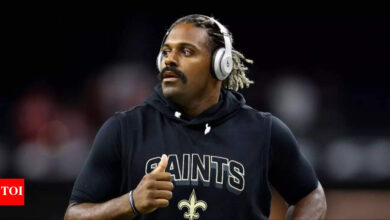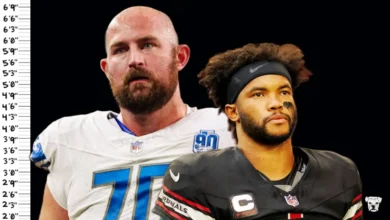Manti Te’o on the Hoax and Life After: “Honestly, I’m Never Going to Be Completely Normal”

Over the next five days, Team Deadspin assembled a bombshell so explosive that it would relegate to outlier status Lance Armstrong’s mid-January Oprah confessional about his use of blood doping. On January 16, Deadspin published the story, whose headline said it all: MANTI TE’O’S DEAD GIRLFRIEND, THE MOST HEARTBREAKING AND INSPIRATIONAL STORY OF THE COLLEGE FOOTBALL SEASON, IS A HOAX.
The article correctly pinned blame on a 22-year-old enigma named Ronaiah Tuiasosopo, a former high-school quarterback born and raised just north of Los Angeles. Starting in 2008, Deadspin reported, Tuiasosopo created a fake virtual persona—that of Lennay Kekua—by exploiting multiple social-media outlets: Facebook, Twitter, Instagram. And the doe-eyed beauty seen in the avatar photo? Although Diane O’Meara did know Tuiasosopo from high school, she was neither Lennay Kekua nor a party to the hoax. Tuiasosopo had conned her into sending him a photo she thought would be used to cheer up a cousin injured in a car accident.
That Lennay was a fictive character raised questions about the veracity of Manti Te’o’s version of events. Obviously, there was no starry-eyed meeting in Palo Alto.
Also, Deadspin reported, “Te’o and Tuiasosopo definitely know each other.” As evidence, the publication cited friendly Twitter exchanges between the two. Te’o wished Tuiasosopo a happy birthday; Tuiasosopo addressed Te’o as sole—Samoan for “brother.”
Then came the money shot: “A friend of Ronaiah Tuiasosopo told us he was ‘80 percent sure’ that Manti Te’o was ‘in on it,’ and that the two perpetrated Lennay Kekua’s death with publicity in mind.”
The sentiment was widely shared. That afternoon, ESPN’s on-air news ticker shrank the story to a headline: DEADSPIN REPORTS: 80 PERCENT CHANCE TE’O INVOLVED IN HOAX. The ticker failed to mention that the claim was based on speculation by an unnamed source who proved to be wrong. Given that ESPN is to sports media what TASS was to the Soviet Union, nightfall brought a riot of screaming media attacks on Te’o.
Act III
In Which Manti Te’o Is College Football®
That college football is a professional sport masquerading as an amateur one has been a given since the 1980s, when top-tier football schools began making millions from ticket receipts, merchandising, donors, and TV revenue. By the 2000s, coaches of A-list teams—Alabama, Louisiana State University, U.S.C., Texas—earned upwards of $3 million a year. In 2012 the teams mentioned above made, on average, $45 million in profits. The figure would have been significantly higher but for the precipitous drop-offs in revenue at U.S.C. and Penn State, both of which are in N.C.A.A. prison—the former for alleged major recruiting violations, the latter for the Jerry Sandusky scandal. And, really, these are merely the two headliners in a period of widespread corruption wrought by the various moneyed forces—boosters, coaches, universities, media—who together compose the College Football Industrial Complex.
The Penn State scandal, being a textbook case of how not to handle an internal problem, also marked a sea change in the way both schools and players dealt with impending crises. To wit: Even before Deadspin revealed the hoax, both Notre Dame and Te’o determined to, in the words of Brian Te’o, Manti’s father, “get out in front of the story.” They had the advantage of time. On Christmas Day—three weeks before the piece was published—Te’o returned to Hawaii and told his parents, Brian and Ottilia Te’o, that his dead girlfriend had called to inform him that she was not really dead, that she’d faked her demise in order to fool murderous drug dealers out to get her. Also, Te’o told them, he strongly suspected that perhaps the girlfriend was neither dead nor alive, except in someone’s imagination. Or maybe not. At this point, according to Manti, he was as confused as they were.
The parents told him they wanted the hoax exposed, no matter what. They instructed Manti to lay it all out there to Notre Dame and to Tom Condon, a football superagent with whom Manti planned to sign immediately after the Bowl Championship Series National Championship Game. According to the family, Condon, who works for the Creative Artists Agency and represents New Orleans Saints quarterback Drew Brees and Denver Broncos quarterback Peyton Manning, told them, “We’ll talk to our legal and P.R. departments, and we’re going to coordinate with Notre Dame. We’re going to come out with a statement and then we’ll see where this goes.”
For nearly three weeks, though, the story went nowhere. That this silence happened to coincide with the lead-up to Notre Dame’s biggest game in decades was, at the very least, noteworthy.
Only after the Deadspin story broke, on January 16, did Te’o and Notre Dame publicly acknowledge LennayGate. Te’o issued a written statement saying that he’d been duped and that he was embarrassed. Notre Dame’s athletic director, Jack Swarbrick, discussed the matter at a press conference. Fighting tears, Swarbrick called Te’o the blameless victim of a complex “catfishing” scam. But the press conference raised more questions than it answered. Most notably, Swarbrick’s time line seemed at odds with the one Te’o would provide two days later, to ESPN. He told the network that Fake Lennay had revealed herself on December 6; Swarbrick said Te’o hadn’t told Notre Dame until the 26th.
If the hoax had been revealed to Te’o on the 6th, and if Te’o purported to be a blameless victim, why did he say two days later, on December 8, to a group of journalists, “I lost both my grandparents and my girlfriend to cancer.” It seemed suspicious, given that this was the day of the Heisman Trophy ceremony, when the winner was announced. And, not least, why the hell did the kid never once visit—or even Skype—a woman he had described as “the love of my life.”
If nothing else it was a new chapter in Notre Dame’s long history of self-mythologizing malarkey. (That I happen to be a diehard fan of Michigan—and therefore weary of all things Notre Dame, especially their dancing leprechaun mascot—makes this assertion pointed but no less true.) That “win one for the Gipper” speech in the 1940 Ronald Reagan film Knute Rockne All-American? Fictitious. Rudy, the 1993 hit about a tiny walk-on player who sees the field in the final game, a) was loose with the truth, and b) immortalized a guy, Daniel “Rudy” Ruettiger, who was later accused of being complicit in a scam involving penny stocks. (Ruettiger admitted no wrongdoing and settled with the S.E.C.) In recent years, Notre Dame has stood accused of downplaying criminal offenses committed by its football players. In 2011 a star receiver convicted of multiple D.U.I.’s was quickly reinstated on the team. A year earlier, the Chicago Tribune had reported that a young woman, having accused an unnamed Fighting Irish player of sexual assault, faced a gauntlet of harassment and institutional resistance. (Notre Dame strongly denied that they were slow to act or that there was any cover-up.)
Manti Te’o to ESPN on January 18, 2013: “I kind of tailored my stories to have people think that, yeah, he met her before she passed away.”
Act IV
In Which Manti Te’o Is Here but Not
The Te’o family lives on the North Shore of Oahu, the Hawaiian vacationland famed for its beach houses, five-star resorts, and the surfing mecca known as “the Banzai Pipeline.” But trying to find the Te’os is to hear directions like “O.K., just keep heading east out of town, past the shrimp trucks, the pineapple plantation, and the cow pasture.”
There you will find Laie, a tiny coastal town with one stoplight and four houses of worship affiliated with the Church of Jesus Christ of Latter-Day Saints, Laie being among the first beachheads established by Mormon missionaries in 1865.
Laie is also home to a small, one-story house stocked with large Hawaiian-Samoan Te’os.
“This isn’t Honolulu,” says Brian Te’o, a gregarious bear of a man who works as an educational coordinator at the Punahou School, the private college-prep academy where Manti became a high-school all-American. Brian, too, is a former high-school football player. So are his three brothers.
“No liquor. On Sunday, nothing’s open except church, fishing, and our garage,” Brian explains.
Inside the garage is a typical Sunday luau populated by 20 or so of the Te’os’ closest relatives and friends. The group digs into a potluck feast of pork ribs, sushi rolls, poi doughnuts, and PowerAde sports drink. Everyone here believes the media coverage of the scandal is born of a fundamental ignorance about Samoans. “They don’t understand our culture,” says Manti’s uncle Ephraim Te’o. “This is the part we’re having a hard time with.”
“He’s a typical local kid,” says Manti’s mother, Ottilia, a tall, powerfully built woman who played volleyball at the University of Hawaii. She adds, “Fake Facebook profiles? Within our community, it’s not how our kids operate. They don’t set up a fake person. I don’t think that ever crosses their minds.”
Source link




